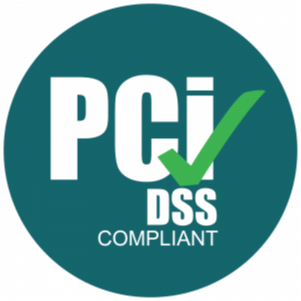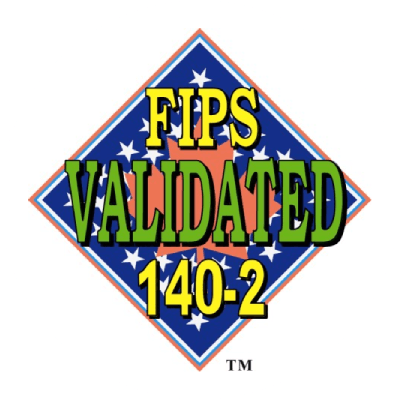Posted by Joyce Ling
October 19, 2023
Introduction
In today’s digital world, sensitive data protection is vital. Machine secrets like API keys and database credentials control data access. Mismanaging them can lead to data breaches and losses. Hence, secrets management, the act of securing and managing these secrets (often with a secrets manager), is crucial.
This article discusses sensitive data and its relationship with secrets. It covers the risks linked to poor secrets management and key principles for effective handling. It also delves into secrets rotation and dynamic secrets’ roles in data protection. By adopting correct strategies, organizations can better their secrets management and bolster sensitive data protection
Sensitive Data and Its Types
Sensitive data, often interchangeable with personal data, represents varied information, each with unique value and sensitivity. Here are specific categories:
- Personal Identifiers: This includes basics like name, address, contact details, and national identification numbers.
- Racial or Ethnic Origin: Data revealing an individual’s race or ethnicity.
- Religious or Philosophical Beliefs: Information disclosing a person’s religious or philosophical stances.
- Political Opinions: An individual’s political views are sensitive due to potential bias risks.
- Sexual Orientation: Information about an individual’s sexual preferences needs high-level protection.
- Trade Union Membership: Data on an individual’s union membership is sensitive because of labor rights implications.
- Genetic Data: This includes information from an individual’s DNA, crucial for protection due to ties to biological identity.
- Biometric Data: This category includes unique data, such as facial recognition or fingerprints, which link directly to an individual’s identity.
A Note on Sensitive Data
It’s essential to understand that what designates these categories of data as “sensitive” is their nature and the severe impact their mishandling could have on personal life, identity, and security. Many organizations use Data Sensitivity Measurement to evaluate the sensitivity level of each type of data, allowing them to apply suitable security measures and access controls and prioritize efforts. While the specific classification may vary depending on the legal jurisdiction or industry requirements, the guiding principle remains the same: the protection of sensitive data is paramount due to the high-stakes consequences of its potential misuse.
How Sensitive Data Relates to Secrets
As we delve into the intricacies of sensitive data, it’s important to understand the role of a key subset known as “secrets”. Contrary to the idea that secrets are merely a type of sensitive data, they primarily function as the gatekeepers to the wealth of sensitive information organizations obtain on a regular basis.
Secrets, in the context of information security, often refer to unique identifiers or credentials such as API keys, passwords, and tokens. These secrets are the keys that authenticate an individual or a system, granting them authorized access to the sensitive data in question.
In essence, secrets are the essential elements that control access to this data. Mismanagement of these secrets can result in unauthorized access, underscoring the importance of efficient secrets management in the broader landscape of sensitive data protection.
The Risks of Poor Secrets Management
Managing secrets effectively is an essential part of data protection in our digital landscape. When this process fails, the risk of data breaches, identity theft, and significant financial impacts can escalate, causing substantial problems on the personal, corporate, and societal levels.
- Data breaches: Data breaches are a key risk with poor secrets management. These occur when unauthorized parties gain access to secured, private data. An example of this was the 2022 LastPass breach. An access key was leaked, allowing intruders to access and decrypt storage volumes within the company’s cloud-based storage service. Data breaches don’t just compromise personal information. They can also damage the trust businesses have worked hard to build with their customers.
- Identity theft: Another notable risk, identity theft is when malicious actors use stolen secrets. This can include passwords to impersonate individuals and access their personal, financial, or medical records. Not insignificant, 1,434,695 identity theft complaints were reported to the FTC in 2021.
- Financial repercussions: Also significant, the direct costs of remedying a data breach can be high. Organizations might face fines from regulatory bodies and lawsuits from affected parties. They might even face damage to their business reputation, leading to a loss of business.
Data breaches, identity theft, and financial impacts are crucial considerations, but they are not the only ones. Regulatory compliance requirements, the evolving landscape of cybersecurity threats, and the risk of insider threats further emphasize the importance of effective secrets management. As we delve further, we must remember that this isn’t just an issue for IT or Security departments. It is a fundamental component of business strategy and personal data protection in our digital age.
Data Protection & Secrets Management Principles
Ensuring the security of sensitive data and managing secrets effectively requires the implementation of robust principles and practices.
To start, these principles form the core foundation of data protection:
- Encryption: Encryption is a pivotal principle for protecting sensitive data. It works by converting data into an unreadable format, making it accessible only to those possessing the right decryption key. Thus, even if data falls into unauthorized hands, it remains unreadable and unusable.
- Access and Security Controls: Implementing robust access and security controls is crucial. This could include measures like multi-factor authentication. This provides an added layer of security by requiring multiple verification factors to gain access.
- Regular Audits and Monitoring: Consistently monitoring and auditing secrets usage is a critical aspect of managing sensitive data. For example, keeping an active log of who is accessing what data and when. In addition, this can include conducting regular security audits to ensure all systems are functioning correctly and are up to date. By doing this, unauthorized access can be quickly identified and mitigated. This helps insure that data remains secure and in the right hands.
Secrets Management Principles
In the context of secrets management, a few critical principles stand out:
- Least Privilege: This principle revolves around granting only the access necessary to perform tasks—no more, no less. This approach curtails potential accidental or deliberate misuse of access privileges.
- Secrets Rotation: Regular alteration or rotation of secrets mitigates risk of outdated secrets falling into the wrong hands.
- Secure Storage: The principle of secure storage advocates for stowing secrets in secure, encrypted vaults. This strategy provides an additional layer of security, ensuring secrets aren’t exposed in easily accessible locations like codebases or configuration files.
To sum up, the principles and practices of secrets management serve as essential guidelines for protecting sensitive data. By effectively safeguarding information from unauthorized access and potential misuse, the risk of data breaches and identity theft is substantially reduced.
Moving from ideas to action, it’s important to understand that these secrets management principles aren’t just theoretical. They come to life through the use of specific tools and techniques. These tools make it possible for organizations to put the principles into practice, helping to protect sensitive data effectively.
Tools and Techniques for Secrets Management
In the realm of secrets management, a plethora of tools and techniques are available to help organizations secure their sensitive data. These tools play a significant role in executing the principles discussed earlier, contributing to an overall strategy for sensitive data protection.
- Integrated Secrets Management Tools: Tools are available that can store, distribute, rotate, and control access to sensitive data. Examples include HashiCorp’s Vault, AWS Secrets Manager, and Azure Key Vault. However, today’s hybrid organizations often need a solution that can manage and rotate secrets on-prem and multi-cloud. Akeyless streamlines secrets management with one easy-to-use platform.
- Encryption Tools: Standalone encryption applications, like GPG (GNU Privacy Guard), are often used for encrypting data files. Often, organizations need a comprehensive secrets management platform that integrates encryption. For example, Akeyless saves time and effort, ensuring your stored secrets are always encrypted.
- Privileged Access Management (PAM) Tools: PAM tools are designed to safeguard human access. However, they are often unable to handle the secrets automation of hundreds of thousands of transactions associated with development processes. This limits their use for safeguarding machine secrets which can be a primary target for hackers targeting customer data.
- Sensitive Data Discovery Tools: Some software can help identify sensitive data within an organization’s systems. Tools like Google’s DLP (Data Loss Prevention) API can scan data stores. In addition, they can identify potential sensitive data based on predefined or custom infoType detectors.
Consider Your Context
While these tools and techniques provide significant utility, it’s important to note that their implementation and effectiveness can be context-dependent. Specific definitions of sensitivity may apply in different circumstances. For instance, personal health information (PHI) has a high level of sensitivity in the context of healthcare and should be handled with extra care.
In such circumstances, specialized tools or techniques may be necessary. For healthcare organizations, this might mean adhering to specific regulatory standards like HIPAA (Health Insurance Portability and Accountability Act) in the U.S. or using dedicated data protection solutions designed for healthcare data.
In conclusion, there are numerous tools and techniques available to support secrets management. However, a unified platform like Akeyless integrates these features and can simplify the process. The ultimate aim is to protect sensitive data and manage secrets effectively, boosting overall data security and reducing risks associated with data breaches and identity theft.
The Role of Secrets Rotation and Dynamic Secrets
Now, let’s delve deeper into a critical aspect of secrets management, which includes secrets rotation and dynamic secrets. These practices play a vital role in securing sensitive data and mitigating the risk of unauthorized access.
What is the Importance of Dynamic Secrets?
Dynamic secrets are temporary and short-lived secrets that provide an additional layer of security. Unlike static secrets that remain unchanged for an extended period, dynamic secrets automatically expire after a certain time or when a specific condition is met. By having short lifespans, dynamic secrets limit the window of vulnerability, reducing the risk of unauthorized access if they are compromised. This approach helps organizations maintain tighter control over access and enhances the overall security posture.
What is the Process and Benefits of Secrets Rotation?
Secrets rotation involves the regular changing of secrets used to access systems or sensitive information. This strategy is crucial in minimizing the impact of a potential breach. By periodically rotating secrets like passwords or cryptographic keys, organizations reduce the likelihood of a compromised secret being used maliciously. Additionally, if you rotate secrets regularly, it ensures that the limited lifespan of a compromised secret reduces an attacker’s window of opportunity to exploit it. Secrets rotation serves as a proactive measure to strengthen security and mitigate risks associated with long-term exposure.
What is the Importance of Secrets Rotation as a Key Strategy?
Secrets rotation stands as a fundamental strategy in managing sensitive data effectively. By regularly changing secrets, organizations can limit the impact of a potential breach and reduce the risk of unauthorized access. If attackers compromise a secret, rotating it adds an additional layer of security so its value diminishes over time. Implementing secrets rotation as a key practice strengthens overall secrets management and contributes to a more robust security posture.
In summary, secrets rotation and dynamic secrets are crucial elements in maintaining data security. These practices provide enhanced protection for sensitive information, limit the window of vulnerability, and reduce the risk of unauthorized access. By combining secrets rotation, dynamic secrets, and effective detection and protection mechanisms, organizations can strengthen their data security framework and better safeguard sensitive data.
Conclusion
The management of secrets is instrumental in shielding sensitive data from threats. The application of key practices like data encryption, monitored access, least privilege, regular updating of passwords, and using protected storage is fundamental to managing secrets effectively. As businesses stay abreast of the ever-changing landscape of threats and technological advances, they can increase their defenses against data breaches and identity theft, and uphold the confidence of those who depend on them.
About Akeyless
The Akeyless Vaultless® Platform is an enterprise-grade cloud-native SaaS solution that secures secrets (credentials, certificates, and keys) while eliminating the need for vaults along with the complex and burdensome necessity of vault management, resulting in up to a 70% reduction in costs. The platform uses Distributed Fragments Cryptology (DFC™) to ensure zero knowledge – secrets are created as distributed fragments in the cloud and never found in one place.
Ready to learn more about Akeyless? Get a custom demo today at akeyless.io.












